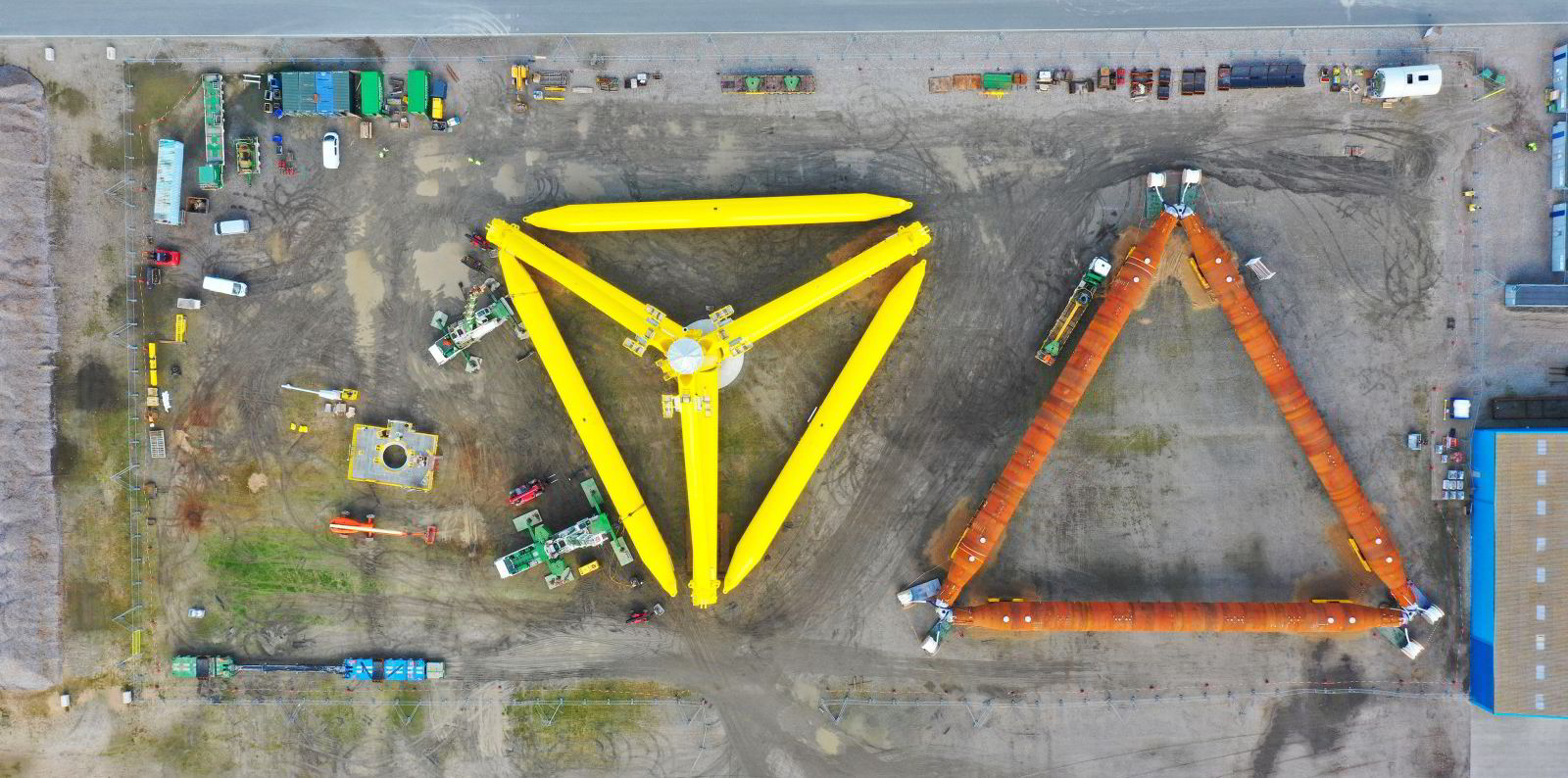The flagship of industrial pioneer Henrik Stiesdal’s floating wind power design has been fitted with its turbine ahead of a programme of tests off Norway starting later this summer.
The prototype of the TetraSpar, which mates a tetrahedral tubular steel platform engineered by Stiesdal Offshore Technology with a 3.6MW Siemens Gamesa machine, is slated to be installed at the MetCentre offshore testing site off the west coast of the Nordic nation as early as July for commissioning.
Trials are expected to run “for years” but “most of the relevant information will be acquired during the first winter season”, Stiesdal said.
The steel elements for the unit were factory-manufactured by wind turbine tower maker Welcon before being transported to the Danish port of Grenaa for assembly. Drone-captured images of the prototype started appearing yesterday on LinkedIn, including the one here used, taken by KrogFoto,
The TetraSpar concept was hatched by Stiesdal in 2015 – as reported exclusively by Recharge at the time – to accelerate industrialisation of the fast-emerging sector via a design that “offers important competitive advantages over existing floating wind concepts, with the potential for leaner manufacturing, assembly and installation processes with lower material costs”. Shell and RWE (then Innogy) became partners in the project in 2018.
Moored to the seabed in 200 metres off water some 10km off the coast at MetCentre, home to the only other other floating unit built so far off Norway, the Hywind Demo developed by Equinor, now an R&D platform.
Stiesdal’s design is one of a series of next-generation floating wind concepts, including X1Wind, Hexicon and others, placing the engineering accent on piece-work concepts where the component parts could be manufacturer in most steel factories and then be shipped to port facilities for assembly and tow-out to project site.
Stiesdal told Recharge in February that manufacture of the flagship pointed to the potential of using two quayside assembly lines to assemble and sail-out units at a speed that would allow a 750MW floating wind farm to be built “in a [summer offshore construction] season”.
Floating wind markets are on the verge of explosive growth globally with analysts expecting a near-1,000-fold expansion of the current fleet as international supply chains take shape to support development of commercial-scale projects around the world, including in key markets in Europe’s northern seas, the US Pacific and off Asia Pacific, where DNV believes half of the 260GW of worldwide floating wind forecast will be turning by 2050


